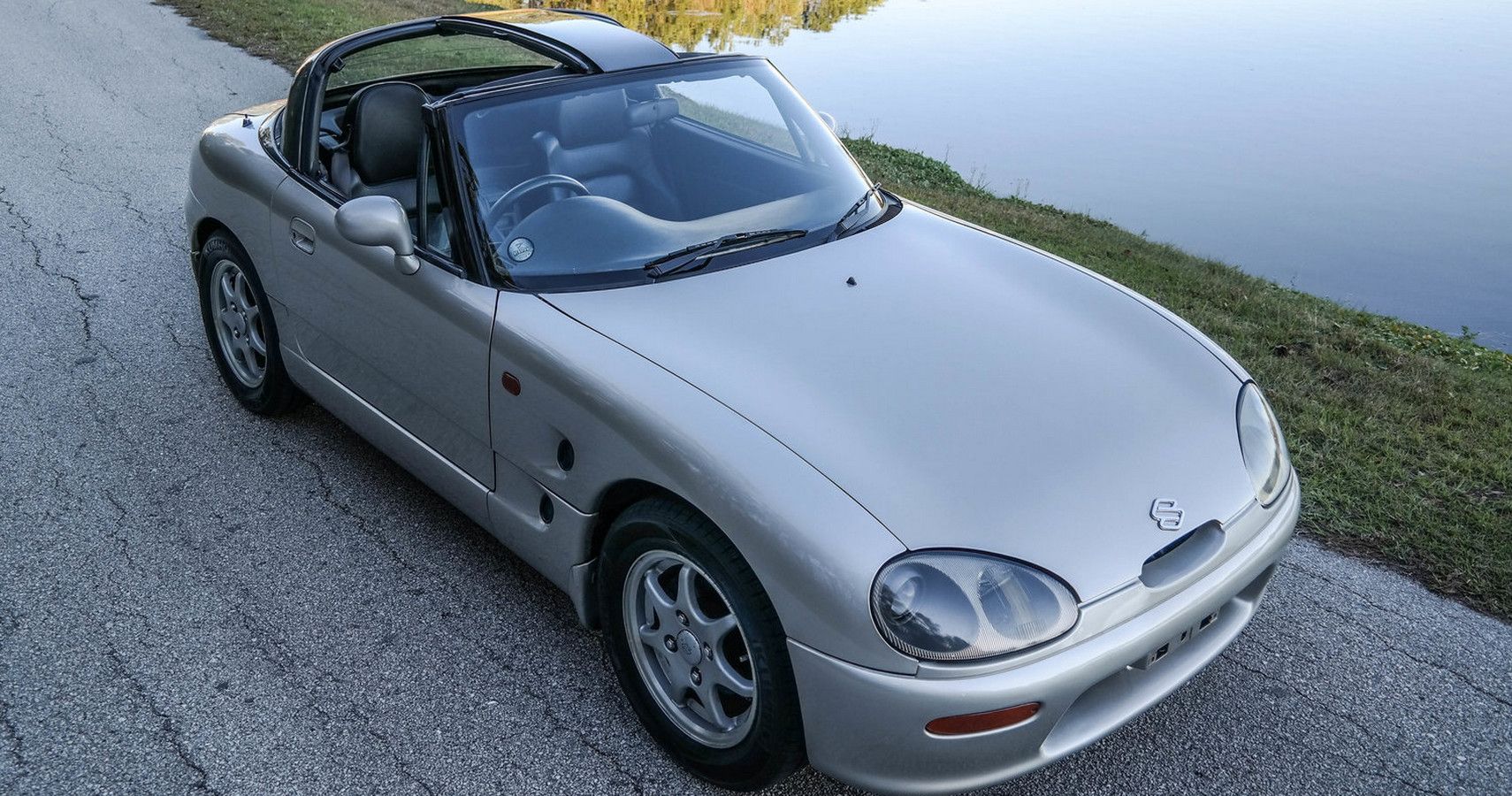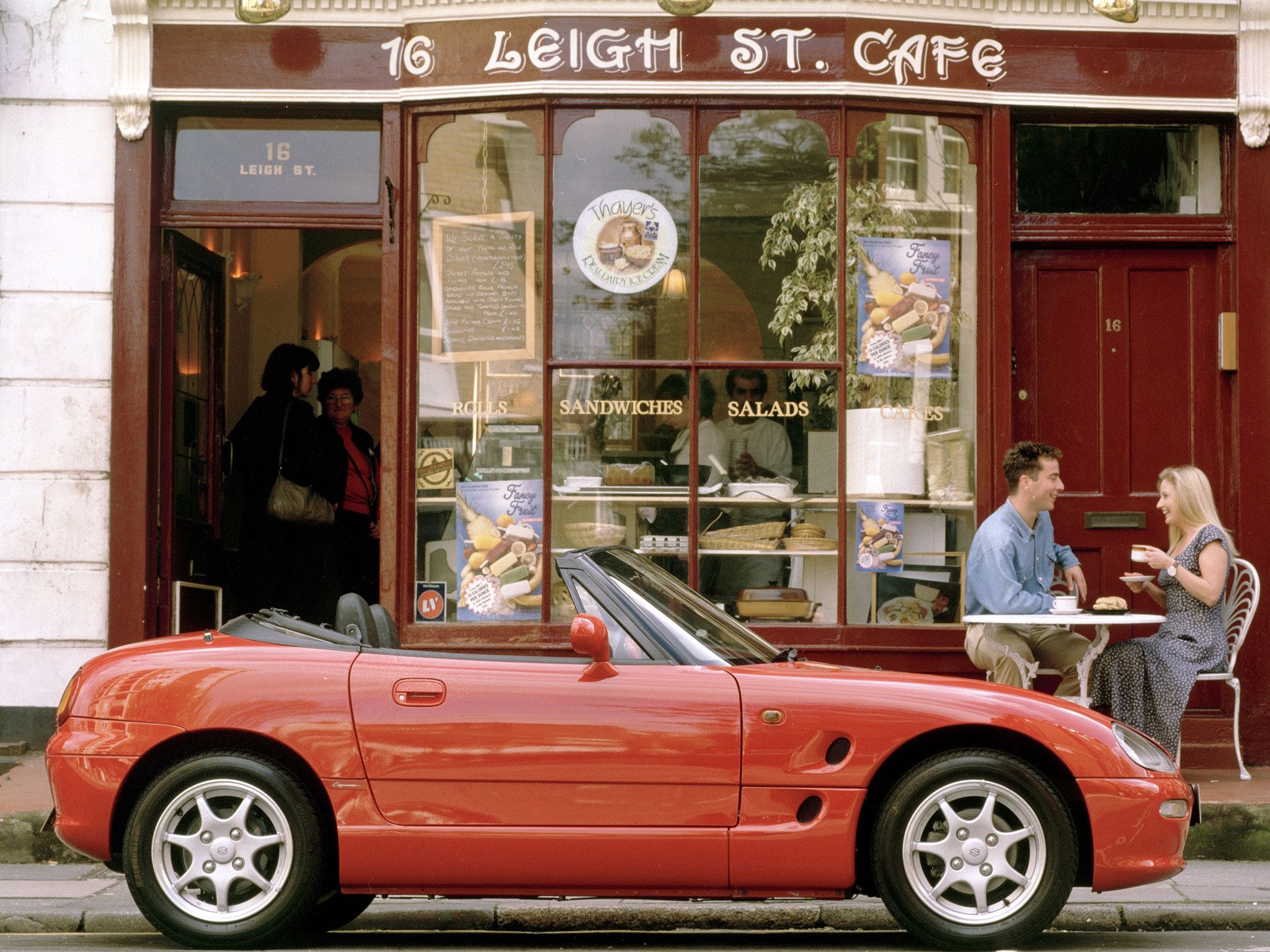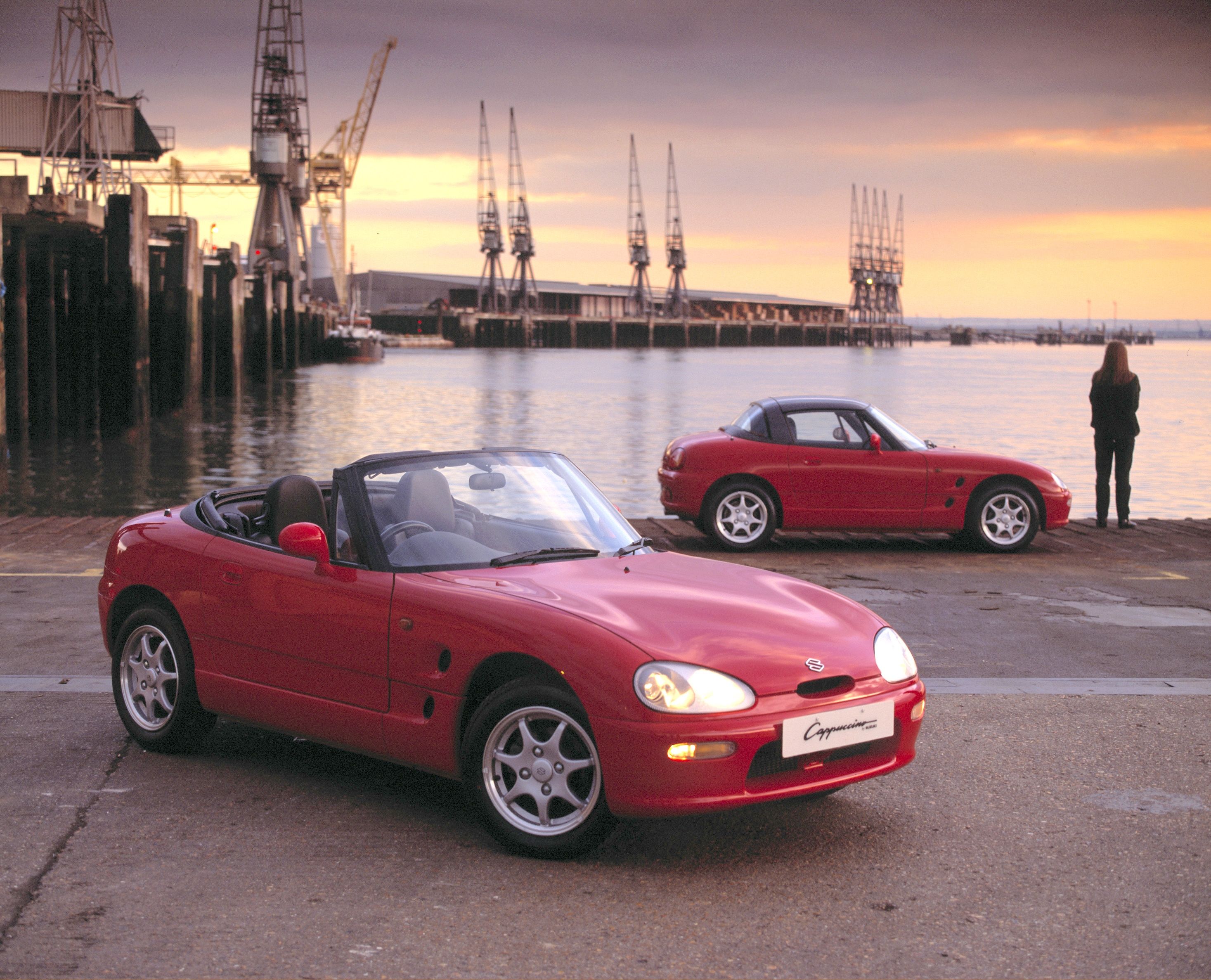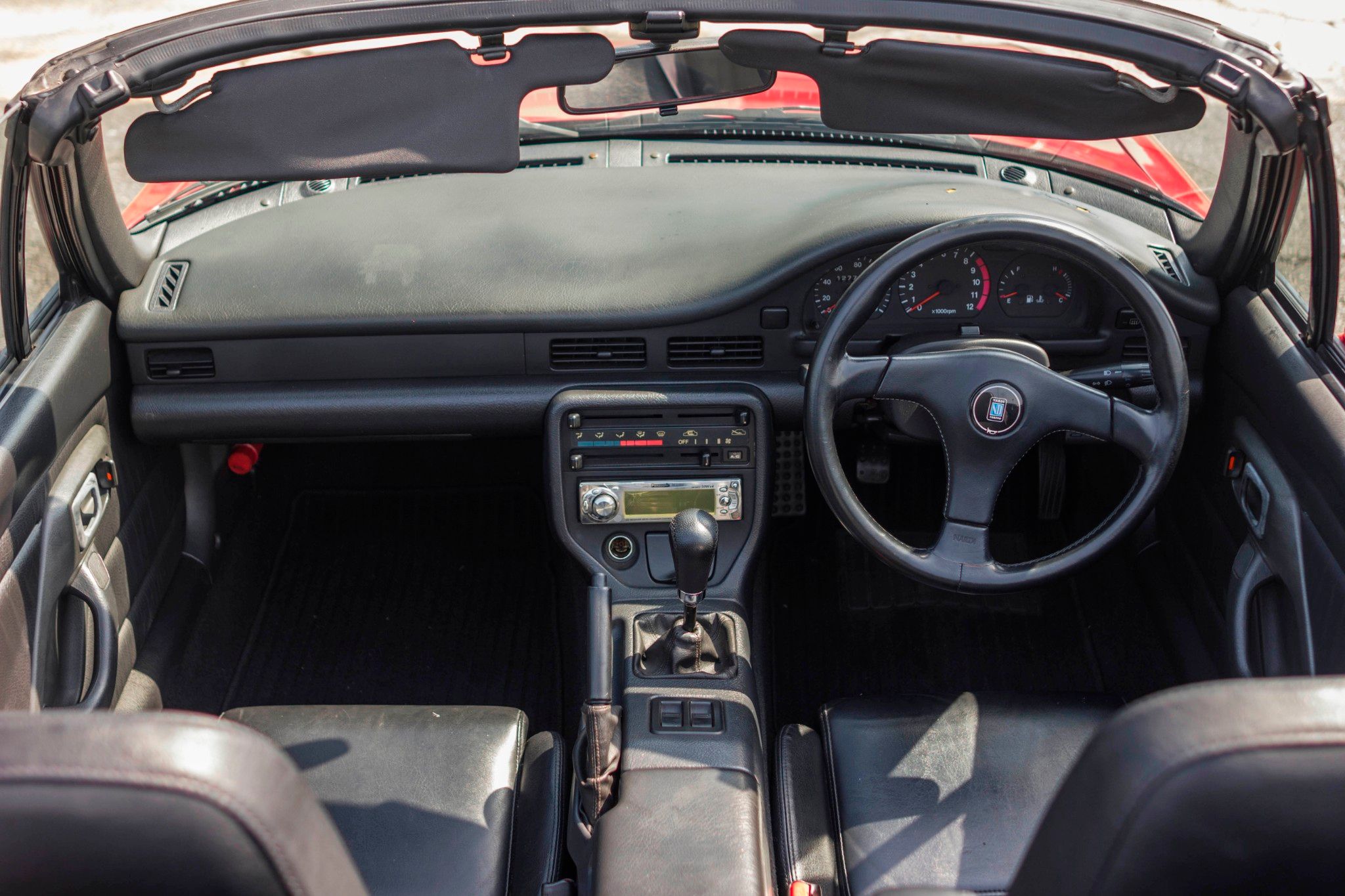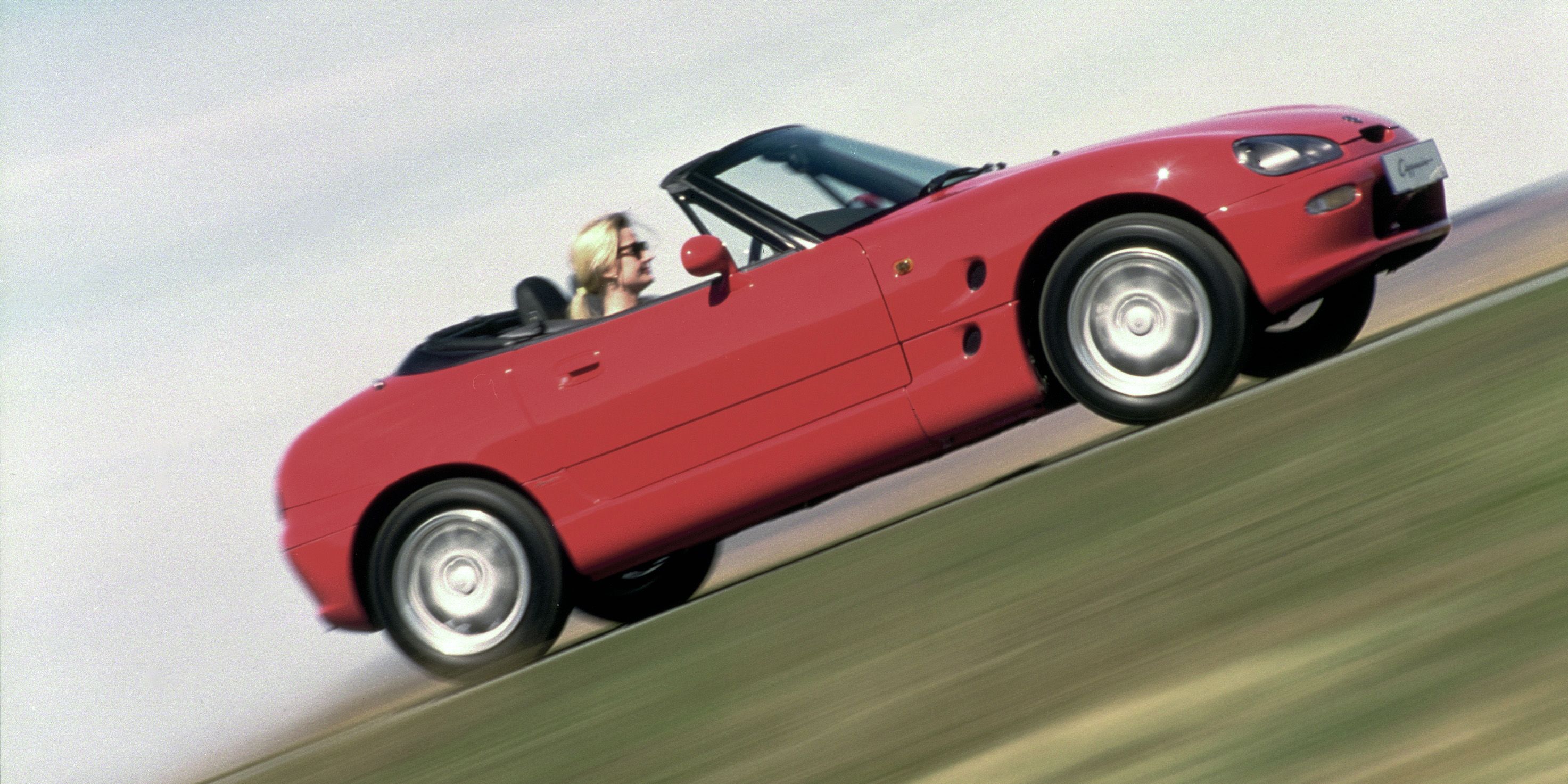Small Japanese roadsters are no strangers to Japan's automotive market. Thanks partly to "Kei" regulations, smaller Japanese vehicles are eligible for certain tax benefits, leading to manufacturers building ultra-small compacts to fit within this box. One of the finest and most amusing of these offerings is the Suzuki Cappuccino. The Suzuki Cappuccino is a compact roadster that comes in at almost two feet shorter than the original Mazda Miata. At 25 years of age, the little sports car is also legal to import into the United States, and JDM enthusiasts are already bringing in examples by the thousands of this favorite Japanese roadster.
Suzuki Cappuccino Powertrain And Drivetrains
The Suzuki Cappucino features a powertrain that is reflective of its size. Power comes from a DOHC turbocharged 12-valve 657 CC three-cylinder that produces 65 horsepower. Power then feeds to the rear wheels through either a meager three-speed automatic or an engaging five-speed manual, the latter of which is a must if a consumer plans on driving more than 50 mph for an extended time. Early iterations contain a timing belt, while updated versions feature a service-free timing chain. Disc brakes are on all four wheels of the cappuccino, as is standard electric power steering. A limited-slip differential is standard in 1995 and newer iterations.
Suzuki Cappuccino Performance And Handling
The most entertaining way to utilize a meager 65 horsepower is by taking a Suzuki Cappuccino out on a winding road. The small roadster weighs only 1,598 pounds and feels far more potent than its horsepower rating would imply. The bantam Suzuki reaches sixty in only 8.5 seconds, but the Cappuccino is so much more than a straight line 0-60 times, which is why it is winning the hearts of so many. American car enthusiasts.
The little sprite roadster is an absolute joy in corners. Its firm independently sprung suspension rewards torment and asks for more in precarious driving scenarios. The driving pleasure is in the same vein as the Mazda Miata, whereas powering through sharp curves in third gear is just as fun as powering through the 1/4 mile in something much more significant. The optional three-speed automatic is the only potential drawback of the Cappuccino. The transmission is a true "slushbox," and low gearing makes it impractical for most American roads. The engaging five-speed manual is precise and is a must for car enthusiasts. A combined original rating of 40 mpg is promising, but a tiny 7.9 gallon tank means consumers will still be frequently stopping for gas.
Suzuki Cappuccino Interior, Quality, And Technology
The interior of the Suzuki Cappuccino is all business and what one would expect in driving a focused compact roadster. Due to all Cappuccinos sales being in either Japan or the United Kingdom, all examples are also right-hand drive. Inside, the driver finds a thin three-spoke steering wheel that offers a clear view of the sizeable analog gauge cluster. The center stack houses the climate controls and radio.
The center console houses the shifter as well as the window switches. Seats come in either textured cloth or plain vinyl. Quality is what consumers would expect to see in a 1990s economy Japanese vehicle resilient but of cheap material. There is little in the way of technology. The Cappuccino is a very analog vehicle. "BA" examples are a higher trim level exclusive to the UK from 1995-1998. These iterations feature technology that makes the Cappuccino more suitable for regular driving. These iterations feature a standard driver's side airbag, ABS, and power door mirrors.
Lightweight aluminum and canvas make up the roof of the Cappucino, which comes apart in four pieces. Meaning consumers can have just the portion above their head open (t-top style), open-air with a roll bar, or fully open-air. The back portion surrounds the rear window in canvas and folds manually behind the seats along with the roll-bar. The consumer must manually remove the three rood pieces above the cabin and place them in the trunk. The whole process can be time-consuming, and leaky tops are common with many joints and 25-year old rubber. The three-cubic foot trunk limits cargo space which with the top panels in place, leaves no room for even the smallest of goods.
Suzuki Cappuccino Pricing And Production
The Suzuki Cappuccino is an economical way to enjoy having a weekend pleasure car both now and when it was new. Today consumers can find Cappuccinos, already imported into the United States for approximately $10,000. Few cars in this price bracket can provide the exclusivity and fun that is standard in the Suzuki Cappuccino. The production total for the Suzuki Cappuccino is just over 28,000 units from 1991-1998. Thanks to third-party importers' obsession with the little roadster, at least 1/3 of these are already in North America. Overall, the Suzuki Cappuccino is an extraordinarily unique and engaging roadster for enthusiasts that won't break the bank.

